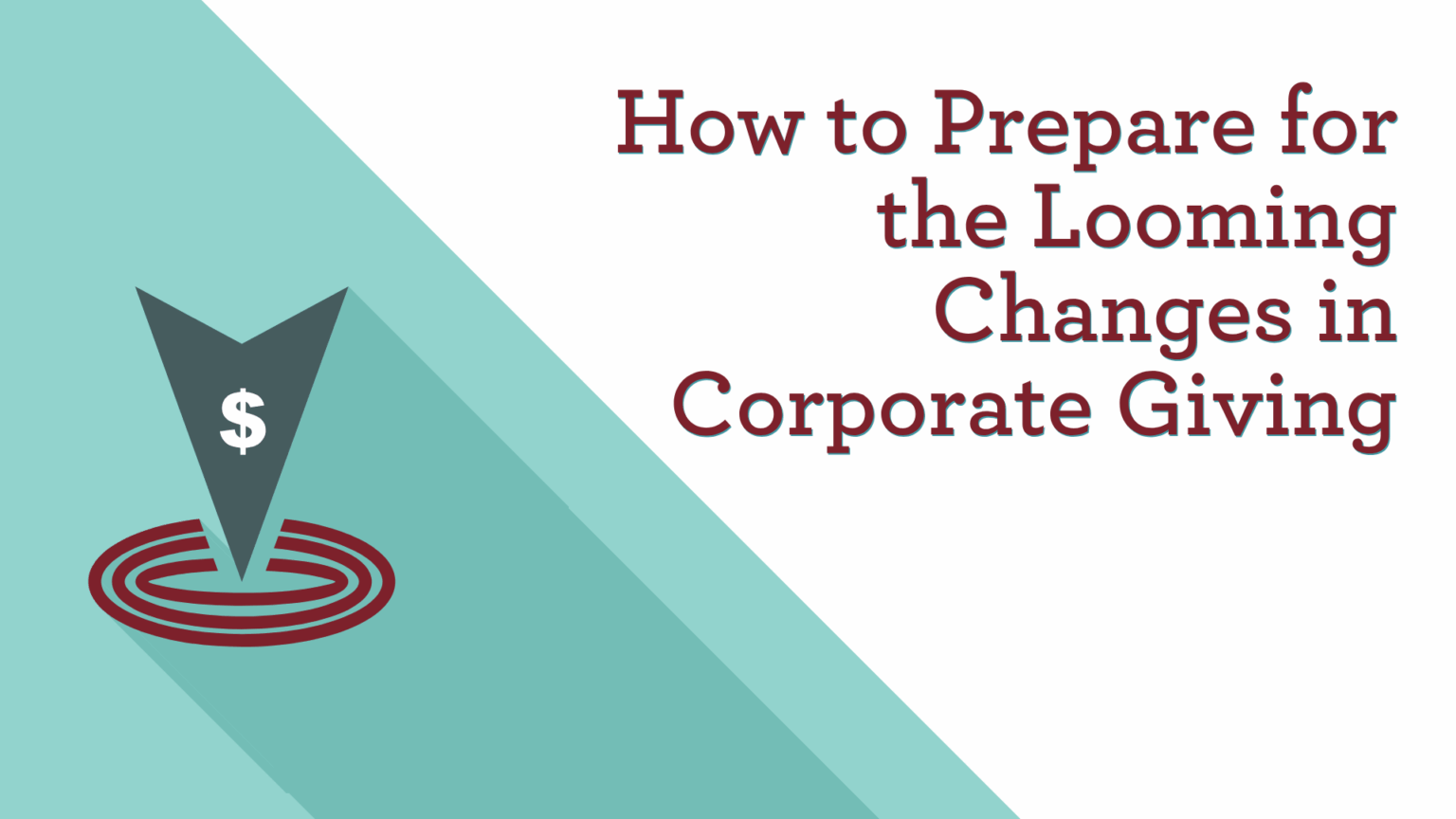Laura MacDonald, CFRE
Principal & Founder
Giving USA’s estimates of giving for 2024 show a promising trend in corporate giving. Strong growth in GDP and corporate profits have fueled a two-year increase of almost 23% in giving by corporations and their foundations, to an all-time high of $44 billion. Giving as a percentage of pre-tax profits has crept above 1.1% for the first time in 20 years. Unfortunately, these trends are about to encounter stiff headwinds.
The “Big Beautiful Bill” will upend the tax code, so we can expect significant changes to philanthropy, including giving by corporations and their foundations. The last two major overhauls of the tax code took effect in 1987 and 2018. Each time, giving increased in the year before changes took effect (by 16.9% in 1986 and 8.4% in 2017)—so 2025 may yield a continuation of growth. Apparently, donors wanted to take advantage of beneficial tax policies before they expired, because in the year that the new tax code took effect, giving was stagnant.
Past changes to the corporate tax structure have correlated with especially significant shifts in corporate giving. Prior to 1987, corporate giving averaged as much as 2% of corporate pre-tax profits. Corporate giving has declined steadily since then and now averages around 1% of corporate pre-tax profits. What’s the difference? In 2023, corporations would have given an additional $36.5 billion if they were still giving at the 2% level.
Imagine the difference that $36 billion per annum could make in the hands of high-impact nonprofits that heal, educate, serve, and inspire. Instead, at a time when the nonprofit sector is facing significant challenges, proposed changes to corporate taxation may further undermine giving.
Imposing a 1% “Floor” for Deducting Corporate Gifts
A proposal in both the House and Senate versions of the “Big Beautiful Bill” will impose a 1% floor on the deductibility of charitable contributions made by corporations. In other words, corporations will have to give away 1% of their profits before they can deduct anything. Currently, there is no floor. A corporation can deduct the first dollar it gives. Under this proposal, the first 1% of pre-tax profits given to charity will no longer be deductible; only the amount above that threshold will reduce taxable income.
To illustrate the impact, consider this hypothetical scenario:
Acme Systems, Inc. earns $100 million in corporate pre-tax profits and typically gives $2 million per year to nonprofit organizations. If the first 1% ($1 million) is taxed at the current corporate rate of 21%, it is likely that their giving will drop by the same amount—$210,000—to $1,790,000 in order to maintain the after-tax cost of giving: a decline of 10.5%.
If all corporate giving declined by 10.5%, the impact would be a loss of $3.78 billion–one of the steepest drops in corporate giving on record. Furthermore, this reduction would be compounded annually—permanently “baked in”—rather than rebounding as it has following episodic declines (e.g., due to the great recession or other one-time occurrences).
As ominous as this scenario might be, other factors could further diminish giving by corporations and their foundations. Given that average giving by corporations has been less than 1%, how many corporate donors will simply forgo annual giving since they are unlikely to ever realize the threshold needed to trigger the tax deduction?
What Changes, if any, for Corporate Foundations Themselves?
Corporate foundations’ legal obligation to distribute 5% of assets remains the same. The new floor targets the company’s transfer into the foundation, not the foundation’s subsequent grants. So the new tax would slowly erode the amount that companies transfer to their foundations. Giving in this form will still decline, only more slowly.
Emerging Strategies for Corporate Giving
There may be strategies to blunt the impact of this tax policy if/when it is enacted. For example, instead of seeking corporate contributions, nonprofit organizations may pursue earned revenue relationships with the corporate sector. The education program serving high schoolers could be implemented through a workforce development contract with the parent company, rather than grant funds from its foundation. A corporation that once made a grant to fund nutritious meals for preschoolers may now enter into a long-term research partnership with the same nonprofit to study the benefits of nutrition on early education outcomes.
Corporate funders might respond in other ways. When the original “Tax Cuts and Jobs Act” (TCJA) was enacted in 2018, some individual donors responded to constraints on charitable deductions by “bundling.” That is, a donor made a large gift to a donor-advised fund (DAF) every two or three years to qualify for the tax deduction, then used the DAF to fuel their charitable giving in the alternate years while opting for the standard deduction. Could corporations do the same by funding their foundation coffers or a DAF every two or three years—rather than annually?
The impact may also be lessened with the realization that many of the largest corporations pay little—if any—tax. According to Investor’s Business Daily (September 2024), nearly 10% of companies on the S&P 500 pay no federal taxes and actually received rebates in 2023 (Tesla, 3M, and AirBnB received $10 billion in tax credits collectively). The change in the tax code will do little to change the generosity (or lack thereof) among corporate entities such as these.
For smaller businesses, it may be more advantageous to forgo giving from the company altogether and pass profits on to the c-suite. These highly compensated executives may then be expected to increase their personal giving to achieve the firm’s strategic objectives while taking advantage of more generous tax treatment for giving by individuals. Such an arrangement would require significant coordination and cooperation to meet the impact achieved through direct company contributions under the current tax code.
It is also important to consider that corporations give for many reasons beyond tax benefits. Good corporate citizenship is good business because it elevates public image, boosts employee engagement, and builds connections with influential stakeholders. Yet, the tax treatment of charitable giving is a consideration in determining the magnitude, timing, and terms of a gift. This is especially true for publicly traded corporations that report to shareholders, or highly regulated industries that answer to watchdogs.
Before the Storm Hits
There may be a significant opportunity on the near-term horizon. Corporations that are committed to philanthropy may find that the environment is more favorable in 2025 than they expect it to be in future years. Any cause that enjoys strong corporate partnerships should be asking their institutional funders if they’d like to shift (accelerate) the timing of their gifts and payments. There could be a noticeable increase in giving in the fourth quarter of 2025, building on the gains of 2023 and 2024.
Change is Inevitable
With many provisions of the TCJA expiring at the end of 2025, it is inevitable that an overhaul of the tax code will be adopted yet this year. Nonprofit organizations and their donors will find many headwinds that could alter the amount, timing, and structure of philanthropy. Although giving by corporations and their foundations represents less than 8% of all charitable giving, many nonprofit organizations rely on corporate support to deliver on their mission. By understanding the potential changes and adapting, these causes have an opportunity to sustain the programs that meet the needs of those they serve.
A version of this article was first published through The Chronicle of Philanthropy, which can be found here.
Last updated June 20, 2025.





